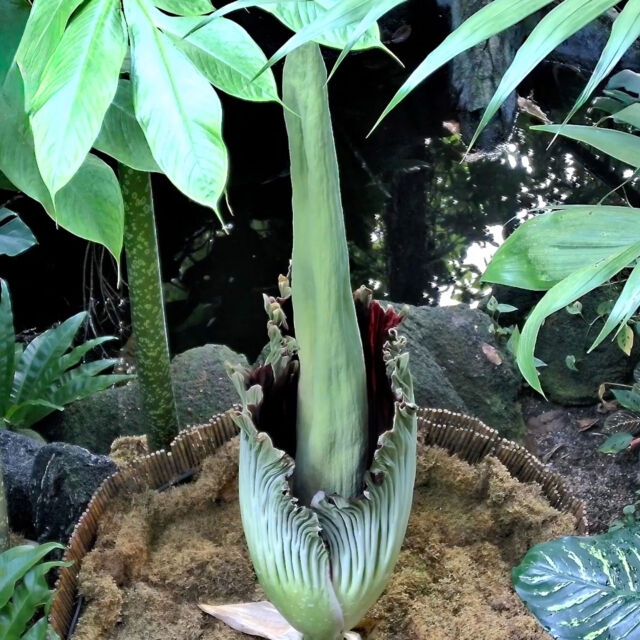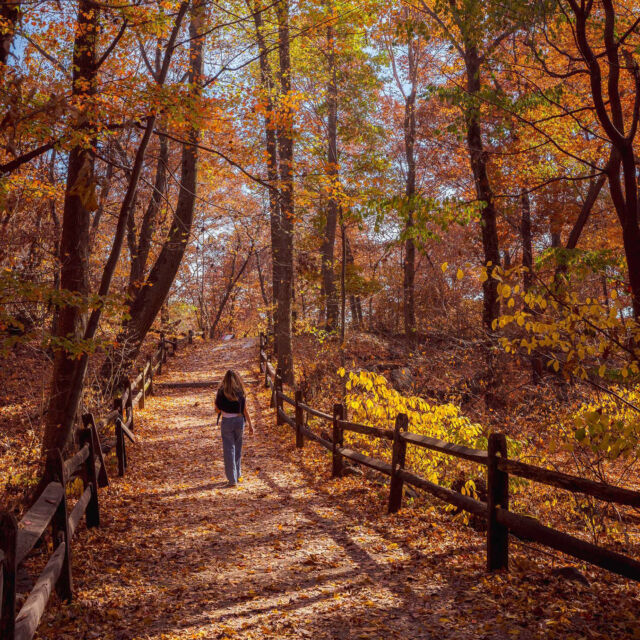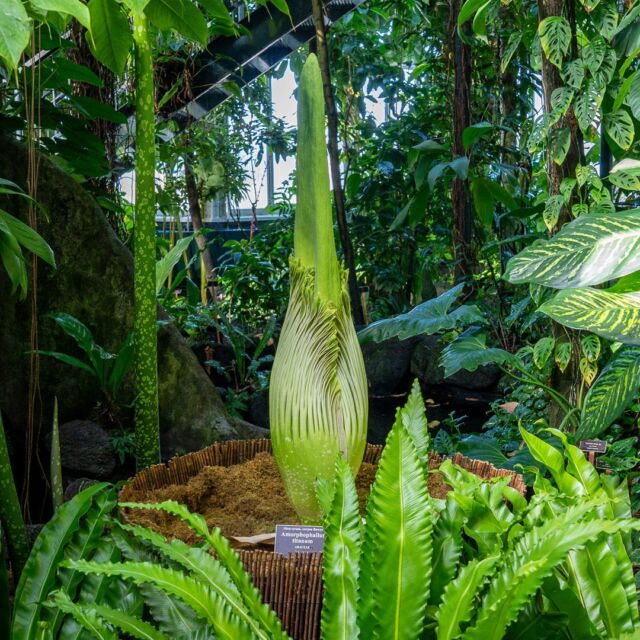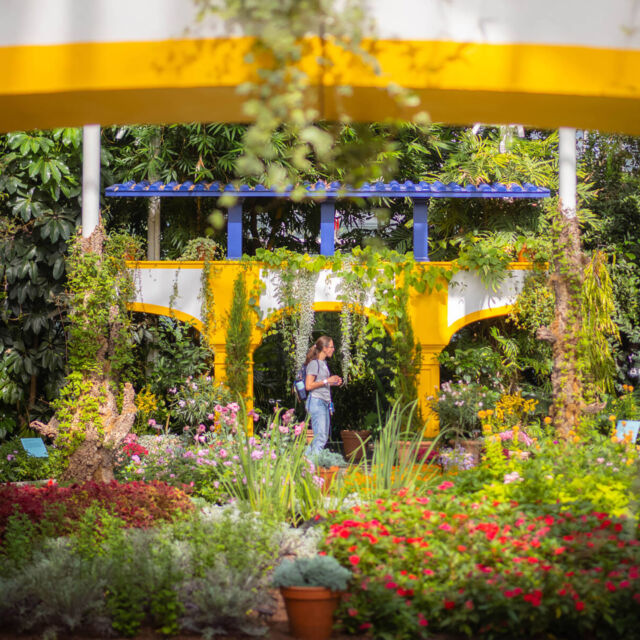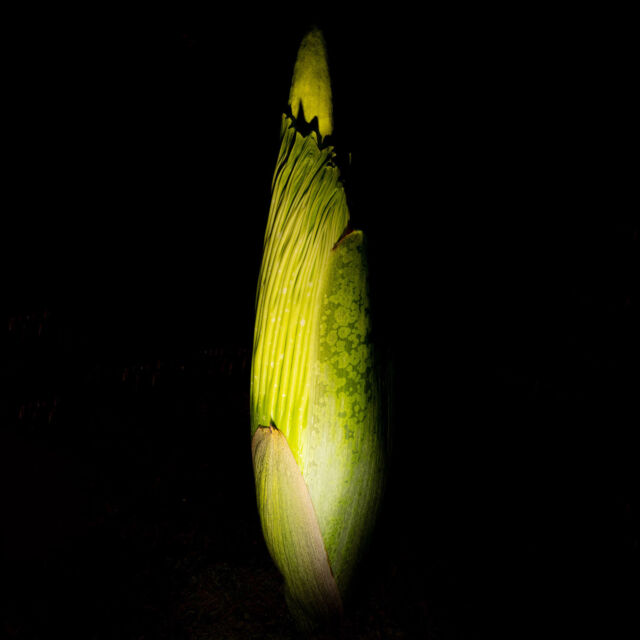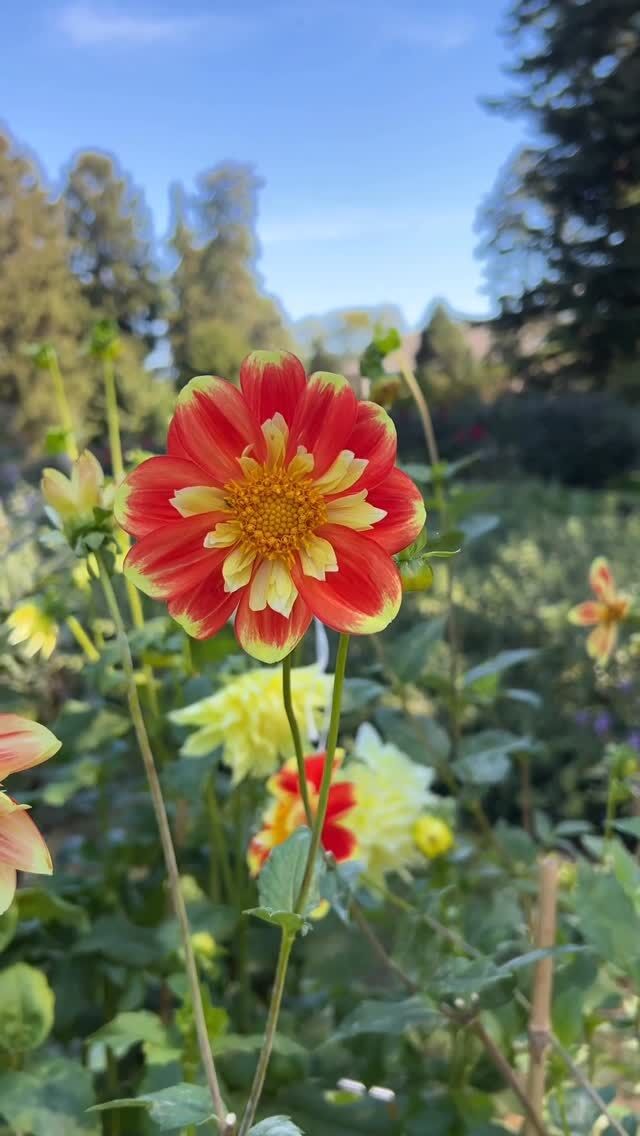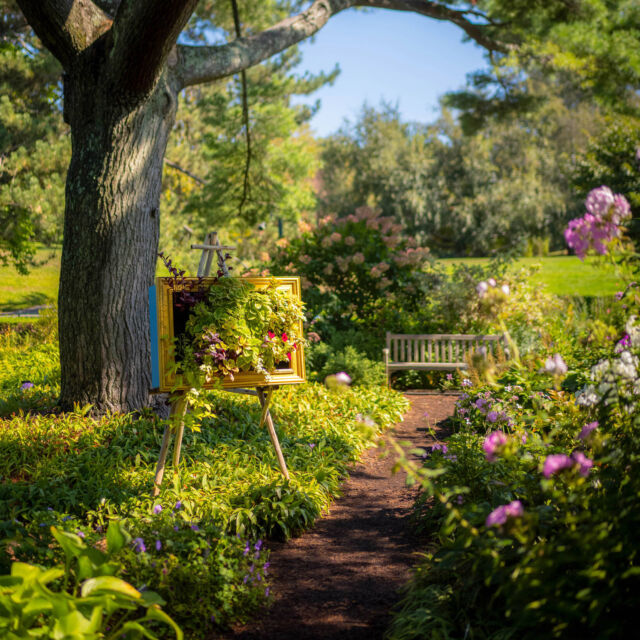Plants for Climate Resilience
Emma Grover is the Project Manager of the Nurturing Nature Initiative at NYBG.
One of the most important tools for building climate resilience can be found all around us: plants. From natural ecosystems like forests and wetlands to built and cultivated spaces such as community gardens, city blocks, and farms, plants provide essential services that help to both mitigate climate change and allow ecosystems to adapt to its impacts.
One important role plants play is in capturing carbon. Through photosynthesis, plants draw carbon dioxide out of the atmosphere and store it in their leaves, stems, roots, and in the surrounding soil. This process helps slow the buildup of greenhouse gases that drive global warming. Perennial plants, especially native species with deep root systems, are especially valuable for long-term carbon storage.
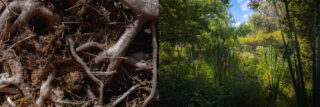
Plants can also help ecosystems adapt to changing environmental conditions. Root systems anchor soil and prevent erosion during heavy rain, while vegetation slows runoff and reduces the risk of floods and landslides. For example, New York City faces a growing threat of flooding due to climate change. Analysis by NYBG and partners reveals a striking overlap between past, present, and future flood-prone areas, identified as the city’s Blue Zones. Within these zones, vegetation plays a critical role in reducing flood risk by stabilizing soils, enhancing infiltration, and buffering stormwater impacts.
Beyond hydrological benefits, plants filter toxins from the air and water, improving environmental quality in ways that support both people and wildlife. They also shape microclimate conditions: in urban areas, trees provide shade and cool the air through evapotranspiration, alleviating the urban heat island effect. Strategically planted urban trees and small forested areas, such as food forests or microforests, can quickly deliver multiple ecosystem services. For instance, a small urban food forest sequestered soil carbon eight times faster than adjacent lawns while supplying food to the local community.
Moreover, plants are a key component of global biodiversity. Having many different plant species in a landscape creates rich ecosystems that can provide food and habitat for pollinators, birds, and other wildlife. This diversity ensures that ecological processes, such as pollination, seed dispersal, and nutrient cycling, continue even under changing conditions. By fostering a mix of species with different traits and functions, plants help maintain the balance and stability of ecosystems in the long term.
On farms, diversity works as a kind of insurance policy. When farmers grow multiple different heirloom varieties of each crop, they protect their families. For example, if one crop struggles with drought or pests, another is likely to thrive. That same principle scales up globally: the more crop diversity we conserve and cultivate, the more tools we have to adapt our food supply to uncertain challenges in the future.
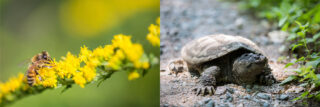
These broad benefits point to the importance of planting climate-resilient gardens. A climate-smart garden is designed with both aesthetics and function in mind. It includes species that can tolerate warmer temperatures, unpredictable rainfall, and other stresses that are becoming more common. By planning resilient gardens, gardeners help their own spaces adapt while also contributing to sustainable local ecosystems.
Positive impacts can extend beyond distinct patches of plants, with gardens connecting fragmented habitats in urban or suburban landscapes. In addition, planting native plants is especially important, since they are adapted to local conditions and provide resources that wildlife depend on. By favoring pollinator-friendly or bird-supporting plants, gardeners weave resilience into the landscape at a community level.
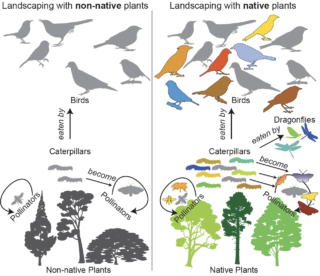
As shown in the image above (Fertakos et al., 2025), native plants provide essential resources for insects, which then sustain birds and other wildlife. For example, many caterpillars become an important food source for nesting birds, while others grow into pollinators. Compared to ‘traditional’ landscaping, native landscaping supports:
-
- 50% higher abundance of native birds
- 9x higher abundance of rare birds
- 3x more butterfly species
- 2x higher abundance
Climate-resilient plants and gardens transform ordinary green spaces into living tools for adaptation and mitigation. They cool the air, stabilize the soil, nurture biodiversity, and lead to climate resilience impacts that can span from the local to regional and global scales.
SUBSCRIBE
Enter your email address to subscribe to this blog and receive updates on new posts.

